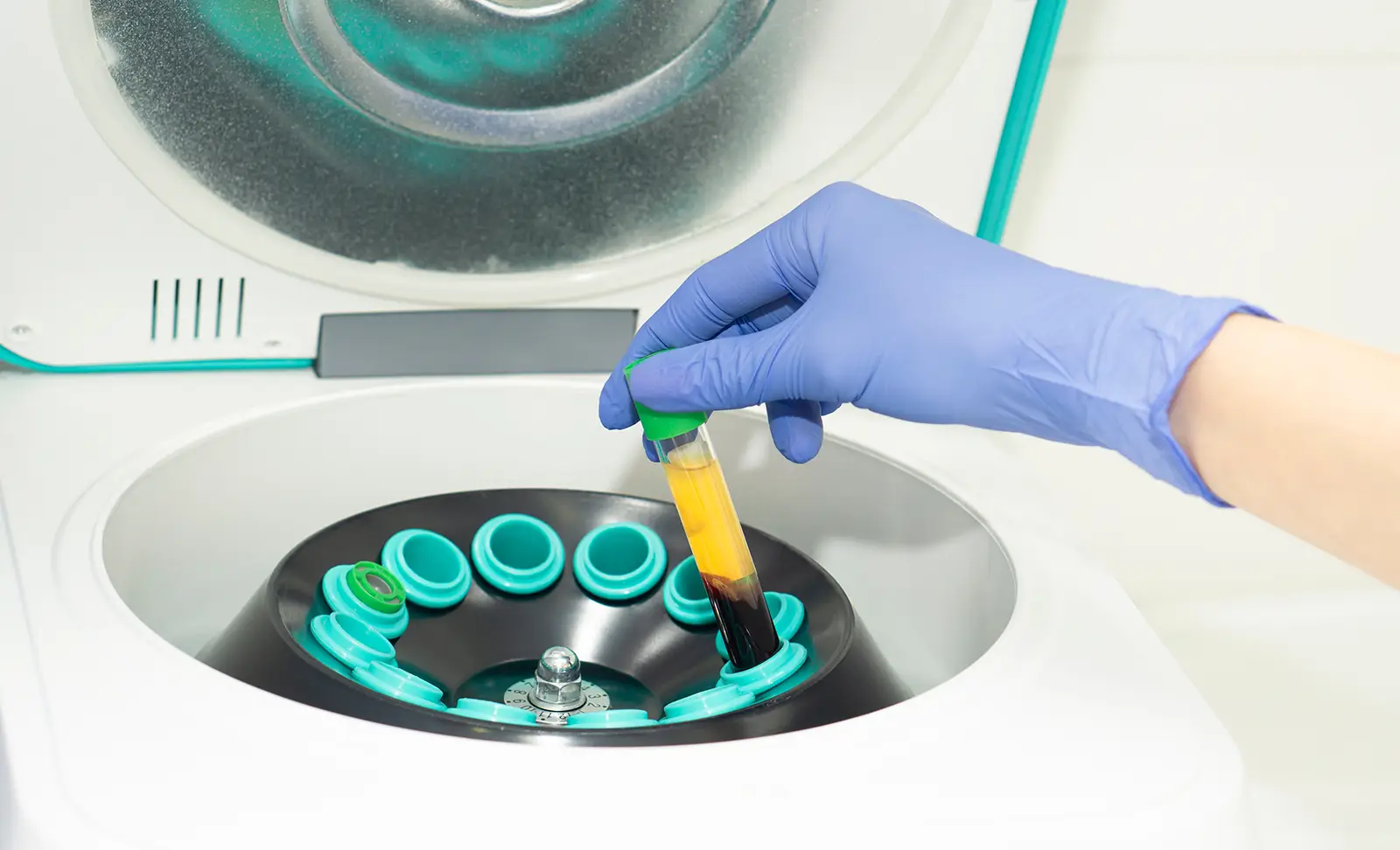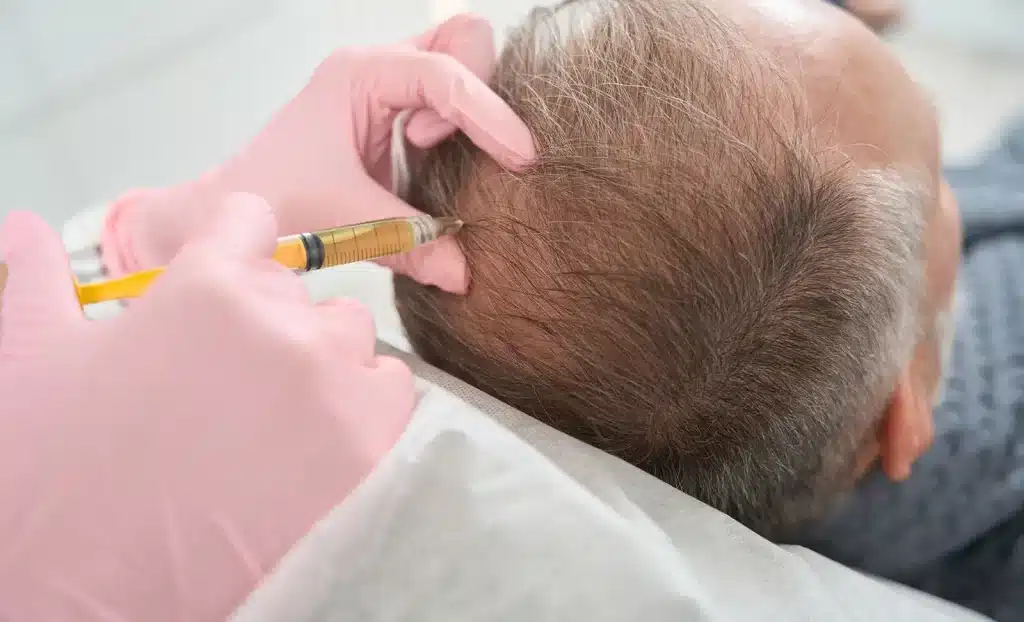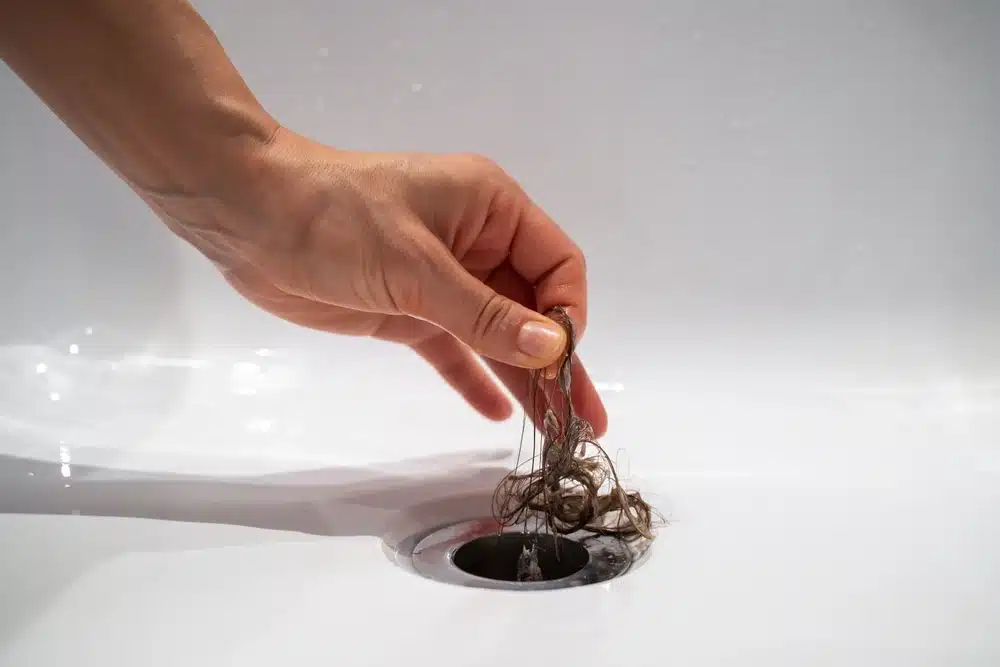Does the idea of a non-surgical, effective hair loss treatment excite you? The answer to your hair loss might be PRF (platelet rich fibrin), a natural treatment that uses your blood to stimulate new growth.
While multiple new hair restoration treatments have sprung up in recent years – many claiming to be more effective than the last – there is genuine evidence to show that PRF can treat androgenetic alopecia. In this guide, find all you need to know about the PRF hair treatment, including the benefits, effectiveness, and potential side effects.
What is PRF Hair Treatment?
PRF platelet rich fibrin is a minimally invasive treatment that involves taking a small blood sample from a patient and then reinjecting that blood into the scalp to boost growth. After the blood sample has been taken, the blood is placed in a centrifuge, which releases specific properties and materials like white blood cells and fibrin. Then, that blood is injected into the scalp – often, local anaesthesia is used to numb the area for this process.
PRF works because the blood contains an intense concentration of platelets and growth factors that stimulate tissue regeneration in the hair follicles and encourage new growth.
PRF vs PRP Injections
You might have already heard of PRP platelet rich plasma treatments, as that one has been around for longer, with platelet rich fibrin hair treatments being new to the market. PRP injections are very similar; PRF is like an updated version.
PRP injections involve a lot of the same steps as PRF. It starts with taking blood from the patient and putting it in a centrifuge to spin it quickly and extract specific materials. The difference is that PRP involves an added anticoagulant during the centrifuge stage, which slows down the blood clotting process. PRF doesn’t do this, which leads to the production of fibrin.
After that, the process is repeated – injecting the platelets into the scalp to stimulate hair growth.
How Effective Are PRF Hair Treatments?
So, does PRF work for hair regrowth? There have been several studies to show its effectiveness. One study examined the impact of PRF injections on 22 patients with androgenetic alopecia, showing that most patients demonstrated improved hair density at the end of the study. [1]
Overall, PRF has a high success rate, making it an effective treatment for hair loss. It provides patients with a non-surgical option for regrowing their hair. It works well thanks to the high concentration of growth factors, particularly fibrin, which isn’t present in PRP injections.
The Benefits of PRF Hair Treatments
Interested in trying this non-surgical hair loss treatment? Here are the benefits.
A High Success Rate
When looking at the effectiveness of PRF hair loss treatments, it’s clear that it’s a success, as many patients experience healthy hair regrowth following the procedure. If you experience hair loss, there is a high chance that the platelet rich fibrin treatment would work for you, making it a worthy investment.
A Non-Surgical Option
People with hair loss typically like to try less invasive procedures before the option for hair transplant surgery. PRF injections are a good alternative, as the treatment can be completed in a day using only injections and local anaesthetic.
It Uses Your Body’s Natural Healing Processes
PRF injections use your body’s natural healing processes. The treatment involves using your blood and taking its most concentrated materials to boost growth. Patients do not have to worry much about allergic reactions or unusual chemicals being injected into their bodies.
Affordability
Compared to hair transplant surgery, PRF treatments are very affordable, especially considering the success rate. In the UK, expect to pay between £200 to £600 per PRF session.
Are There Any Downsides?
It is worth pointing out that PRF injections are a relatively new treatment. While studies have shown excellent results, it might not work for everyone.
Some people also experience side effects following the treatment, such as:
- Swelling
- Bruising
- Redness
- Infection
The most serious side effect is an infection, which is very rare. If this happens, consult a healthcare professional immediately. Signs of an infection following PRF injections include increased swelling, the presence of pus, and a fever.
What to Expect from PRF Treatments
If you are interested in a treatment that boosts hair growth and improves the body’s healing response, you might wonder what to expect on the day and during recovery.
Step One: Consultation
Most clinics will offer a consultation before any treatment type, including PRF. It usually involves a quick discussion about your hair loss and medical history. It will also be an opportunity for you to find out more about the treatment. Some clinics will offer online consultations.
Step Two: Taking Blood
On the day of the platelet rich fibrin treatment, the clinician will take blood from your arm. This will be quick and mostly painless; you’ll know what to expect if you have had a blood draw. Not much is needed, so you shouldn’t feel dizzy during or after this process.
Step Three: Preparing the Platelets
This stage happens away from you – the patient. The clinician will prepare the platelets by putting them in a centrifuge, which will spin the blood very quickly. Then, the right components, including fibrin, will be extracted and placed into an injection.
Step Four: Local Anaesthesia
To make the injecting process more comfortable for you, the clinician will offer a local anaesthetic. That will mean you don’t feel a thing during the next stage.
Step Five: Injections
It’s now time for the injections. The platelets and growth factors extracted from your blood will be injected directly into your scalp, around the areas where you most experience hair loss and thinning.
Step Six: Recovery
Following the treatment, you will return home. You can return to your normal activities pretty quickly, with most people able to get straight back to their usual lives straight away. Although, you may experience some symptoms like mild bruising and swelling. It’s best to avoid washing your hair or styling for at least twenty-four hours.
Step Seven: Noticing Results
You will begin to notice results within three months, but full results can take up to twelve months to show.
Step Eight: The Next Treatment
Most patients get multiple PRF treatments for the best results. You typically return to the clinic within six to twelve months for another series of injections; expect the same process.
Is PRF Right for You?
PRF is a minimally invasive treatment that works for many people with hair loss. Is it the right path for you, though? Here’s what to consider.
Your Type of Hair Loss: What is causing your hair loss? PRF injections tend to work for hair loss caused by androgenetic alopecia, but they may also be beneficial for other types of alopecia.
Other Treatments: You might want to try other more affordable treatments, such as minoxidil. We’ll go into alternatives a little further below.
Your Ability to Handle Needles: There is no denying that this treatment involves many needles. You should feel comfortable with needles before seeking this treatment. If not, consider looking into breathing exercises to beat the anxiety.
Your Medical History: Certain medical conditions mean you can’t get PRF injections. This includes people with active infections, certain blood disorders, and liver disease. Those using anticoagulant medicines should also not seek PRF treatments.
Alternatives to PRF Hair Treatments
Is PRF not the right hair regrowth option for you? There are other treatments for hair loss, including:
Hair Loss Medications: Several hair loss medications could help with hair regrowth. Minoxidil is very effective for androgenetic alopecia; finasteride is for men only and works by blocking DHT. Ask your doctor about these.
Low-Level Laser Therapy: If you’re not a fan of needles, you may prefer a less invasive option: low-level laser therapy. This treatment uses red light to activate the hair follicles and boost new growth.
Hair Transplant: A hair transplant is a surgical procedure that produces natural hair growth that lasts a lifetime. It’s an excellent option for those who have tried other treatments but want something that genuinely sticks. The FUE method provides amazingly natural results, and the surgery is not too invasive. If you’re interested in speaking to an expert surgeon about a hair transplant, download our hair track app.
PRF Treatment Hair Loss: In Summary
PRF treatments are like updated versions of PRP injections. The method is quite similar; only PRF doesn’t involve an anticoagulant, which results in the production of fibrin, a protein that promotes hair growth and tissue regeneration. This minimally invasive treatment is a great option for anyone experiencing hair loss, as it has produced excellent results and comes with few risks.
Are you more interested in a hair transplant? The team at Harley Street Hair Clinic are here to help. We have a team of expert surgeons who are highly skilled in hair transplantation. Check our patients gallery to see what we can do.
Sources:
- https://pmc.ncbi.nlm.nih.gov/articles/PMC11247247/#:~:text=Three%20studies%2C%20encompassing%2022%20patients,hair%20density%20and%20growth%20improvements




